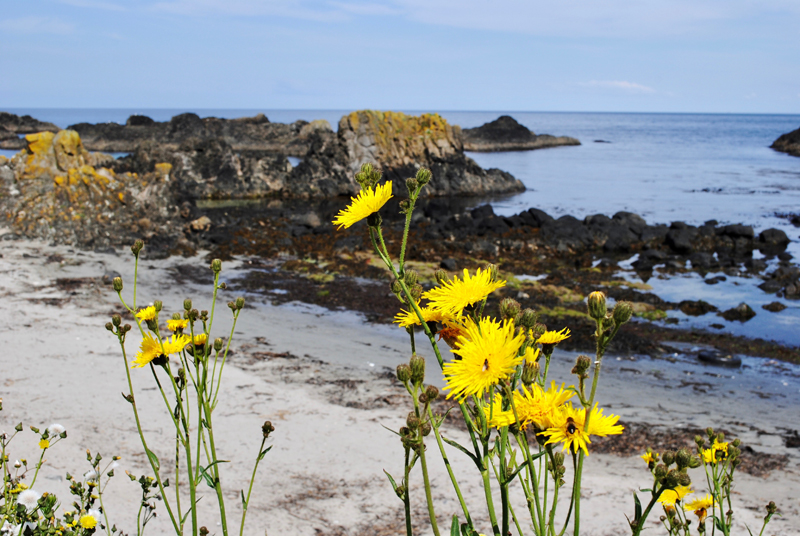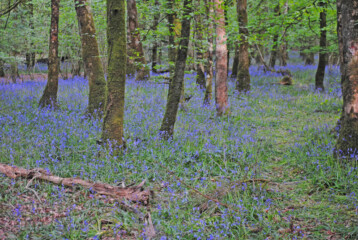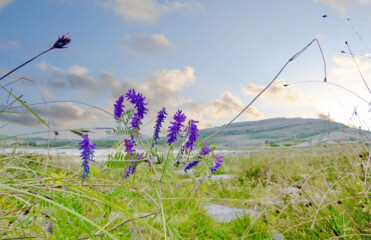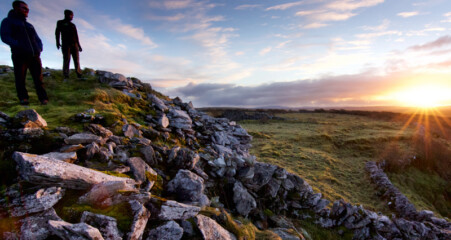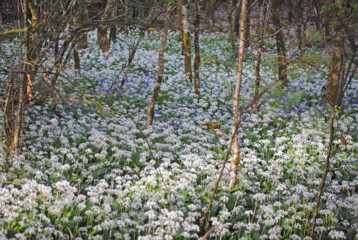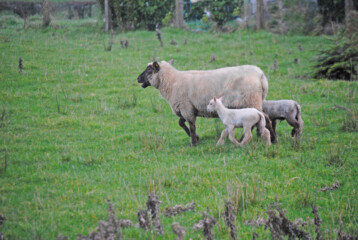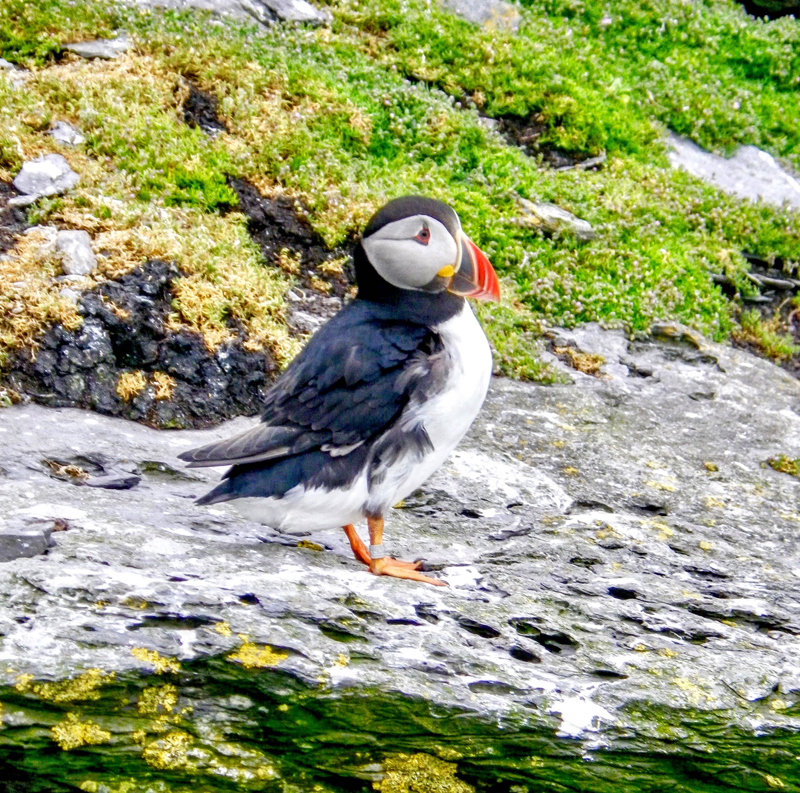- What are the seasons in Ireland? Read More
Ireland is home to ever-changing weather and 4 relatively mild seasons, and sometimes you get to experience them all in one day!
Spring is technically the months of March, April and May though the Gaelic calendar has spring staring in February. The Irish countryside comes to life again during spring, with rolling hills and crags bursting with wildflowers, and fields full of fluffy new lambs. April and May are actually some of the driest months, but beware that, as with anywhere and anytime in Ireland, the weather is quite changeable, and you’ll still need warm and rainproof gear. Spring temperatures are on average a a crisp 7-15°C.
Summer ranges across June, July and August, though the Gaelic Calendar starts summer in May. The earlier part of the season are typically the driest and warmest months and the most popular for visitors, but by August, the weather starts to turn, and rainfall tends to increase. Average temperature ranges between 12°C and 18°C. June 21st is the longest day of the year, with some 17 hours of daylight! In fact, around the summer solstice, even at midnight, it’ll seem like twilight. You’ll still get rain though – though usually showers that blow over quickly – be sure to bring the rain gear!
Autumn technically starts in Ireland in September and goes on through to November, though as with the other seasons, the Gaelic Calendar starts autumn in August. Though perhaps less dramatically colourful than Scotland, Irish landscapes are still magical during autumn. The temperature during autumn is on generally between 5-12°C, though it can be up to 15-16 some days. Traditionally, Irish autumn – the harvest season – finishes on Samhain, the festival celebrated on 31st October, and the origin of what we today call Halloween.
Winter in Ireland takes place between December, January and February (with the Gaelic Calendar marking the start in November, and the end on 1 Feb.). Winter months are the darkest and shortest days of the year. Though possible, and varying across the country in amount, Ireland doesn’t get much snowfall, perhaps a couple of dustings with one or two bigger storms each year (though with no more than a few centimetres of accumulation). The daytime temperature during winter in Ireland is on average 3-9°C. Winter is perhaps home to some of Ireland’s most beautiful sunrises and sunsets though!
- What is the weather like in Ireland in March? Read More
According to the Gaelic Calendar, spring starts on the 1st of February – by March in Ireland, spring is in full swing. Highs are up to 11°C and lows are just 4°C (40°-50°F). Precipitation is lower than in the autumn, with an average of 55mm, though it can be humid. Though skies may be overcast, showers are generally fleeting. Days are slowly getting longer, with sunrise between 6-7am and sunset between 6-7pm, which makes it easier to enjoy Ireland’s lovely sunrises and sunsets. March 17th is St Patrick’s Day, and no matter the weather, expect to enjoy outdoor festivities!
*Info based on Shannon Airport on the west coast of Ireland.
- What is the weather like in Ireland in April? Read More
April temperatures have a high of 13° and a low of 6°C (42-55°F), and average rainfall is slightly less than March – April average precipitation is about 48mm. April is generally a nice month for getting out on the bike or into the hills as days are longer, temperatures are a bit higher, and rainfall is a bit less.
*Info based on Shannon Airport on the west coast of Ireland.
- What is the weather like in Ireland in May? Read More
May is often one of the nicest months of the year. On the Gaelic calendar, May is actually the start of summer. Expect temperatures from 8-16°C (50-60°) and similar rainfall to April (48mm). Sunset is not until after 9pm making it easier to spend longer out in the wilds. The terrain is usually less boggy, and the fields are full of wildflowers.
*Info based on Shannon Airport on the west coast of Ireland.
- Does it snow in Ireland? Read More
No, it doesn’t snow much in Ireland, and very rarely in spring. There may be the occasional winter snow, but it’s usually more of a dusting or just a few centimetres than major snows – though the infrequent snowfall in Ireland means that when we do get snow, it can be disruptive.
Coastal regions rarely see snow as the sea temperatures are warmer than the coast meaning coastal precipitation will be rain. Do keep in mind that during the same snowstorm, you’ll see snow just a few miles inland. The main areas of Ireland that get snow are generally inland (in the Irish Midlands), and on higher ground such as hills and mountains.
- Does it rain much in Ireland? Read More
It does indeed rain in Ireland. The great thing about rain in Ireland is that it rarely rains all day – instead we get showers interspersed with dry periods of clouds, clear skies and sun. Good chance is that if it’s raining now, wait a bit and usually it’ll clear up! It does rain often here – with higher rainfall on the west coast, and even more so in the northwest – so it’s always good to come prepared with plenty of waterproofs.
Shannon’s annual rainfall is 732 mm while Dublin is 493mm and Belfast is 430mm. Compare this to other locations like London (565mm), Paris (590mm), Vancouver (797mm), Oslo (702mm), Chicago (430mm), and New York (620mm).
- What should I wear in Ireland? Read More
Make sure that you wear lots of layers, as the weather can be quite changeable in Ireland. Avoid cottons at all cost. Be sure to bring a daypack in which to put extra layers in. Even in summer, you may need to have a hat or gloves while hiking, as mountaintops can be quite cold and windy. It’s important to have waterproofs (not water resistant materials), both waterproof jackets and waterproof pants/trousers. Good boots and wool socks are a must as well.
Read more:
- Why should I visit Ireland in spring? Read More
From gorgeous spring wildflowers and lush woodlands to fewer tourists on the hills, new lambs and more availability for accommodations and guides, not to mention Easter and St Patrick’s Day-related festivities, Ireland in spring can be a lovely time of year to visit.
